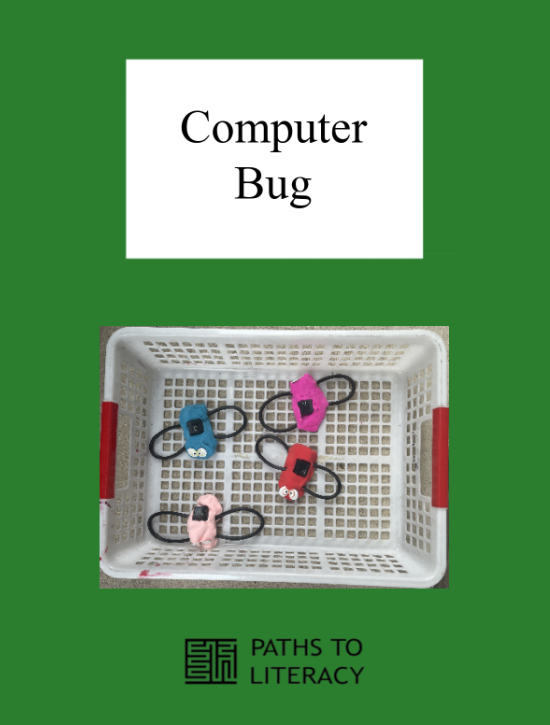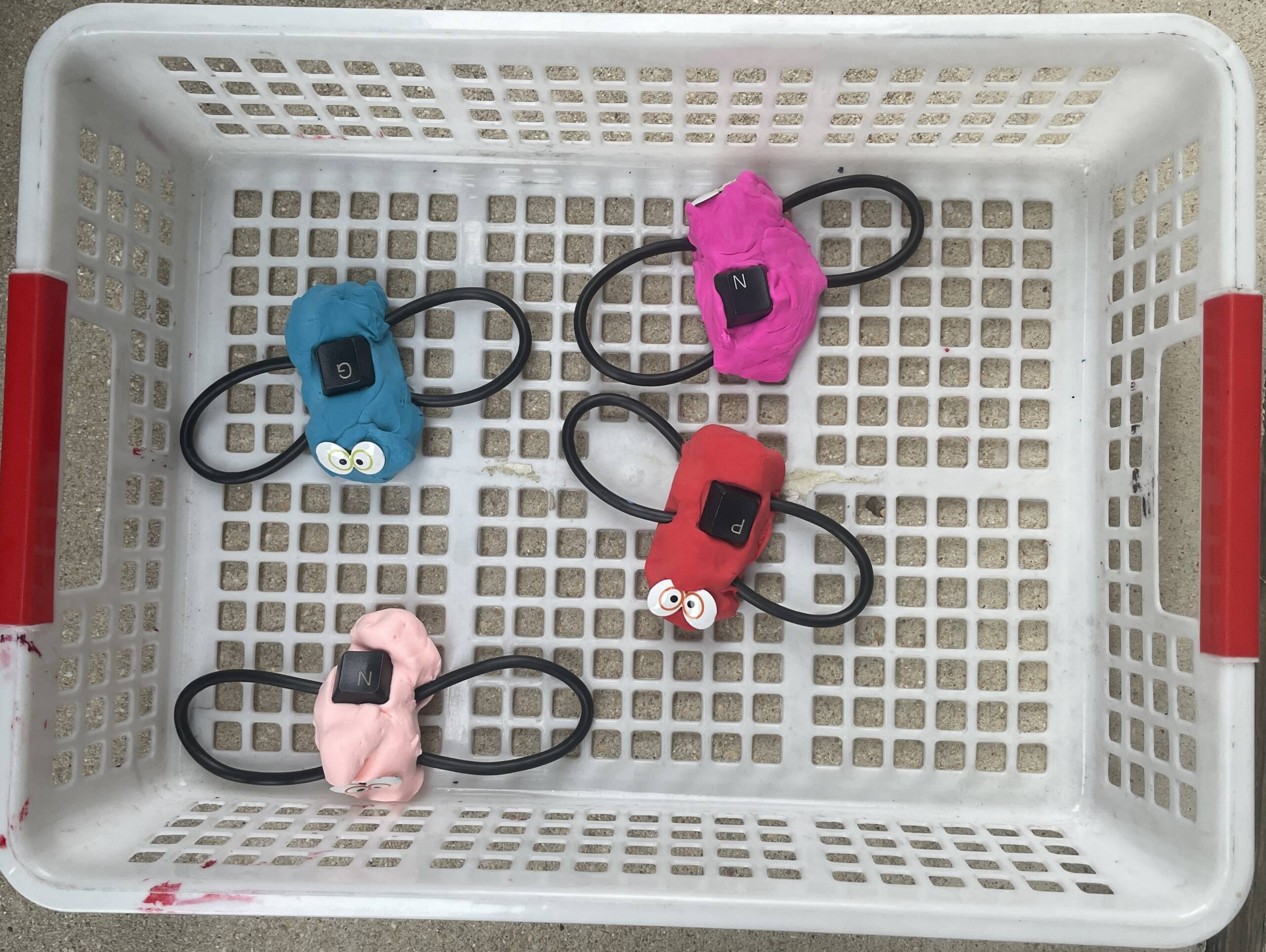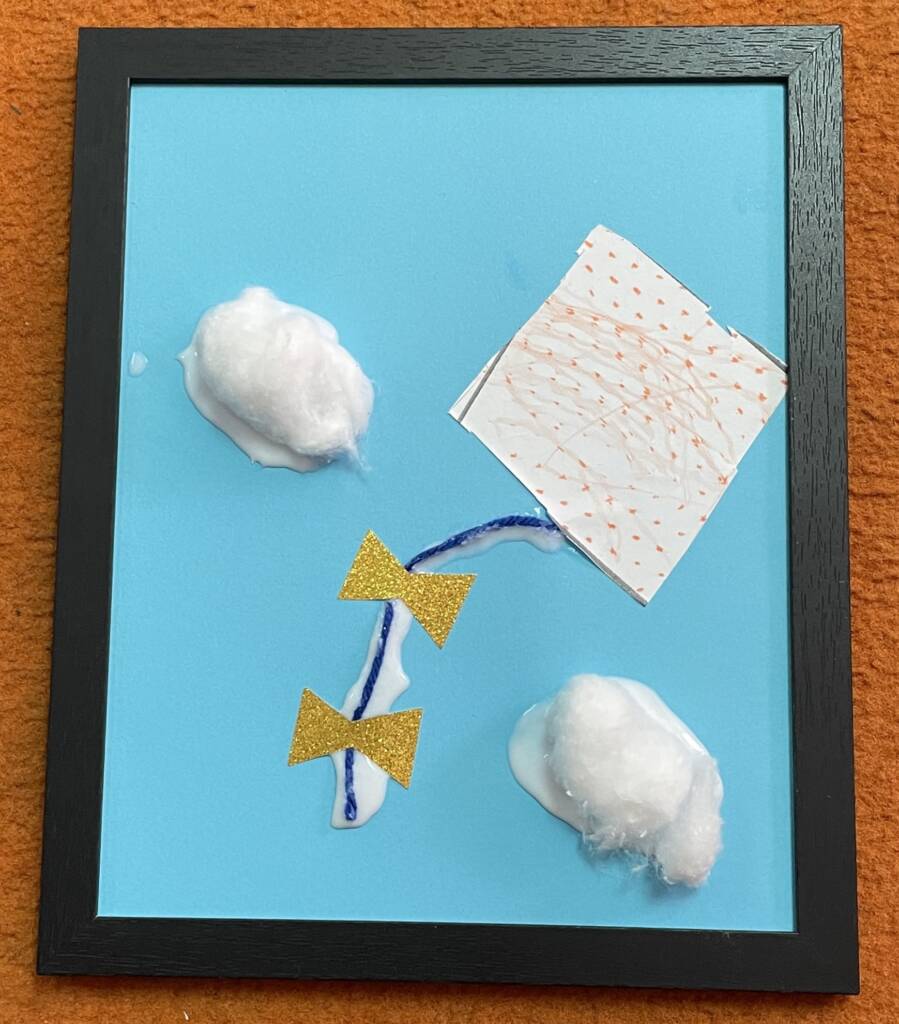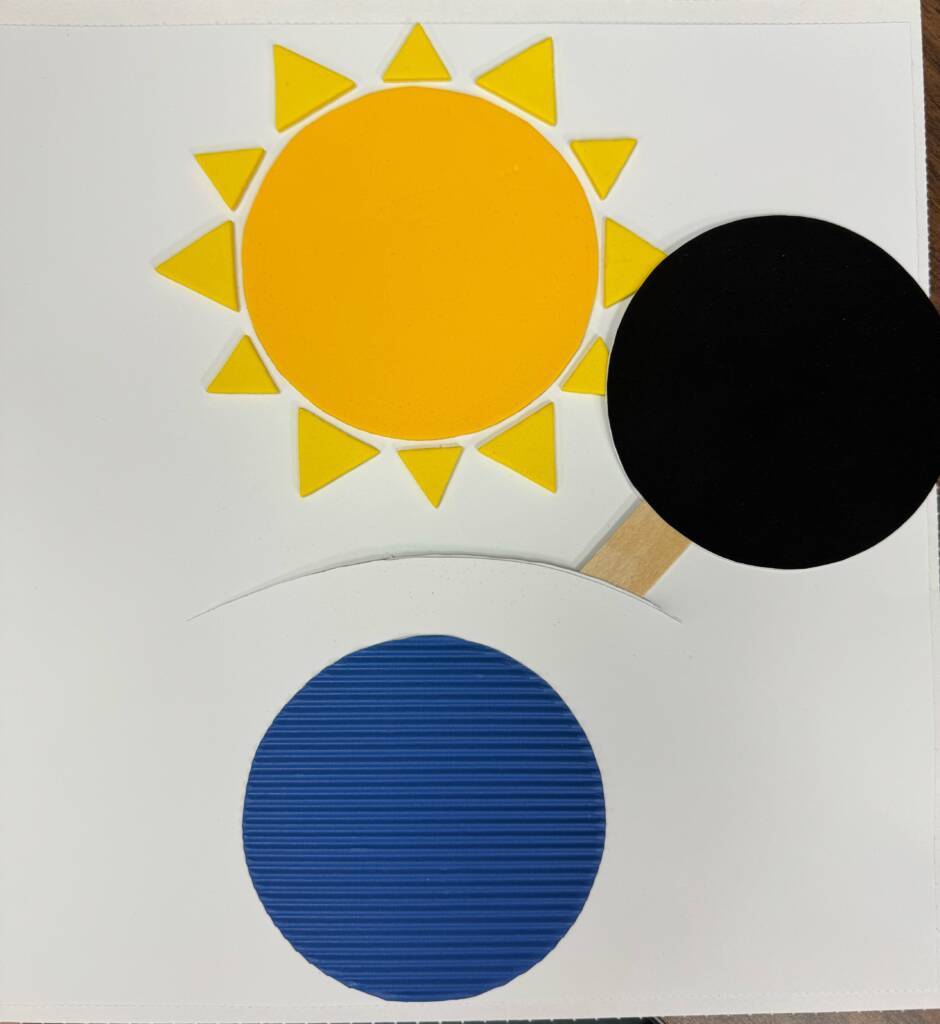As we “march” into spring, my students had the opportunity to choose the theme of our monthly activity. Rather than create something for St. Patrick’s Day or Easter, my students chose to engage in an activity about insects. They learned and practiced several skills with this craft! Working with sculpting foam was something several of my students had never done before. They also got to assemble their very own computer bugs to take home. If appropriate, you can begin a conversation about the differences between computer bugs and those in nature.
Materials Used:
Air Dry Sculpting Foam – I purchased this version as the bags are the perfect size for each bug, and it has multiple color choices that the student can choose from.
Keyboards – I decided I wanted to use the first letter of their name. 11 students made one, plus a few extras to give away. I asked our IT department and others for nonworking keyboards that I could scavenge for parts. A screwdriver easily pops the keys out. The cords of the keyboard became the wings as well! No cords? Use charging cords that no longer work.
Decorative Brads – eyes – I was given a bunch a few years ago as a gift and I finally had a use for them! I felt these were easier for the students to manage than loose wiggly eyes, and they had more options to practice choice making.
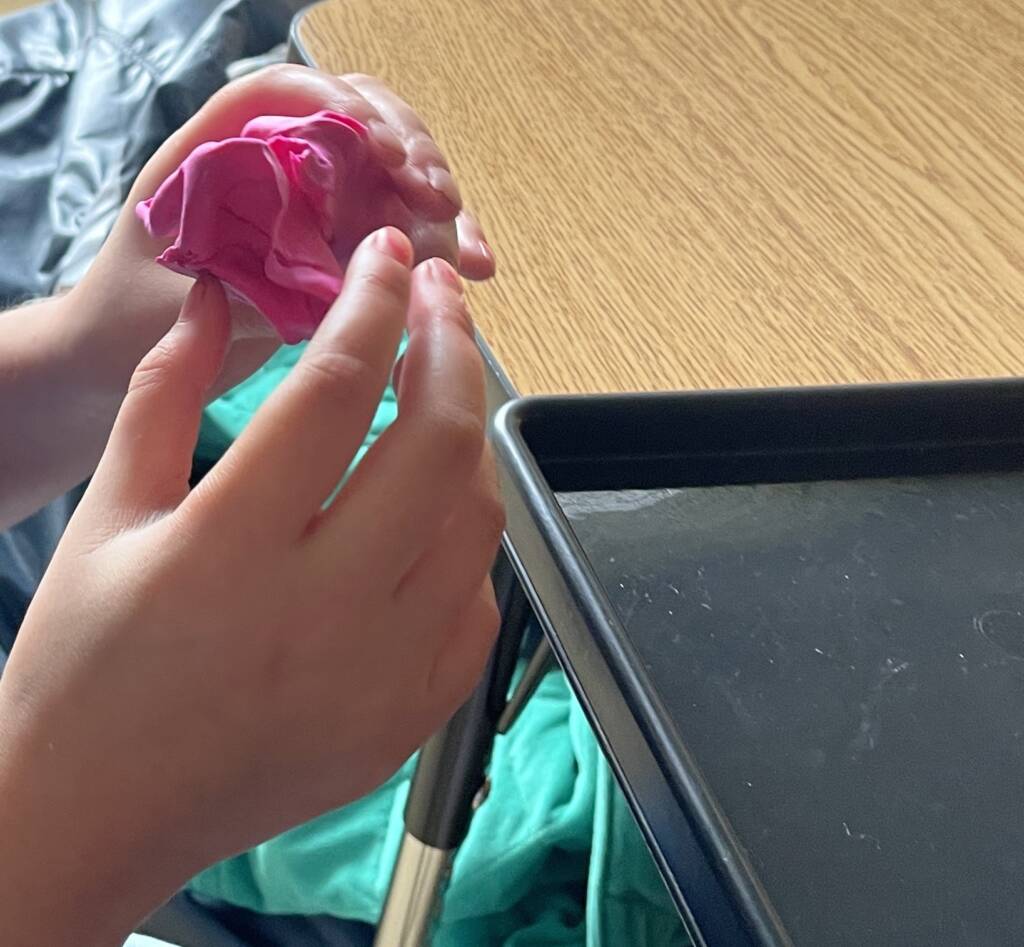
Warm Up Activity 1:
Are You Ready for a Bug Hunt? An interactive book using Velcro pieces to “catch” the bug. As we read the story, we talked about the bugs. Do they fly? Do they crawl? Do they bite/sting? What’s our favorite bug?
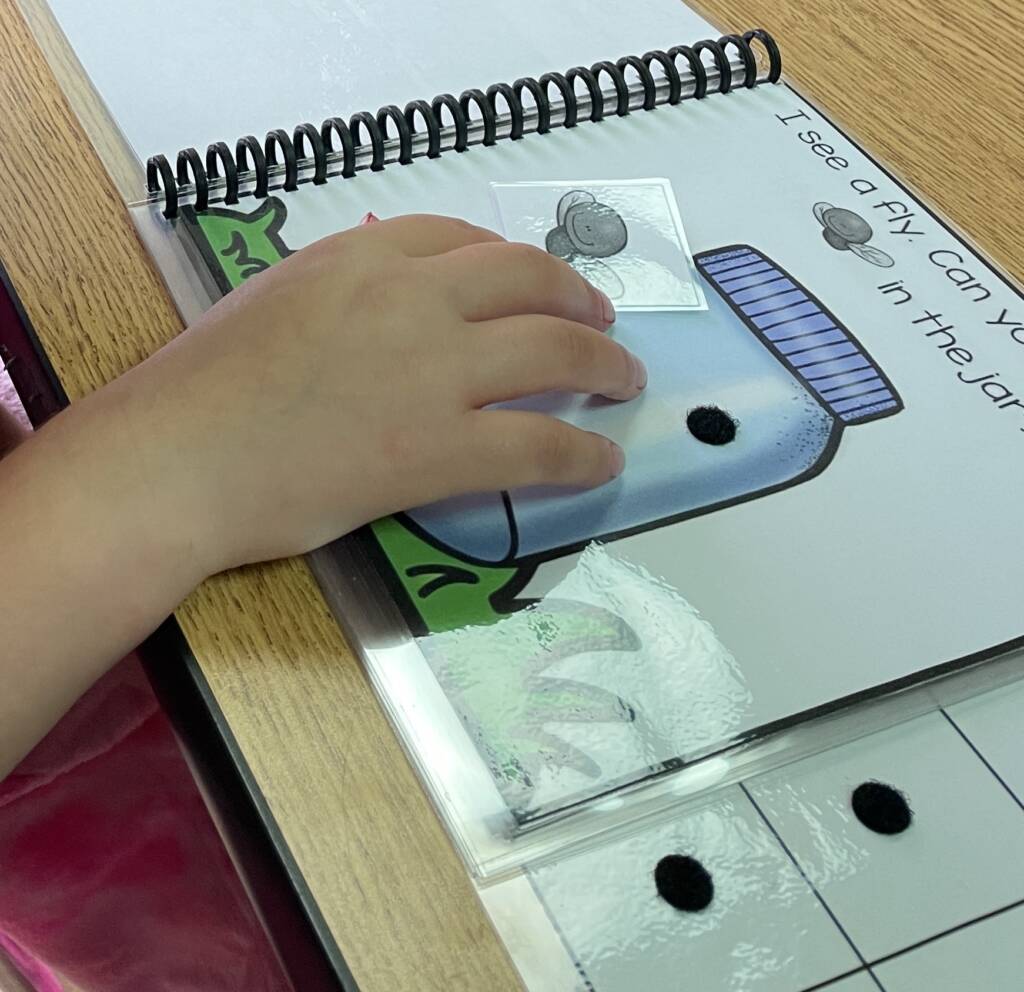
Warm Up Activity 2:
I thought it would be fun to learn about bugs. We can learn their names, whether they fly or crawl, etc. I created a bug sort activity. I bought Bug Toy Figures and created a bug sort sheet to use.
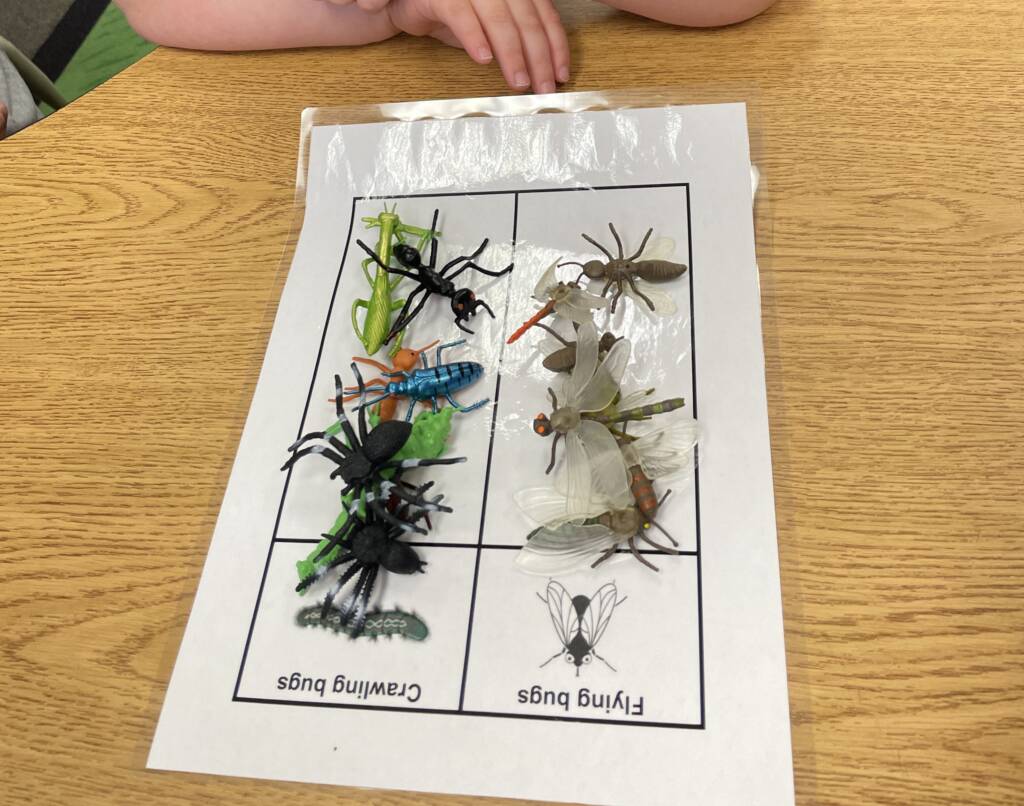
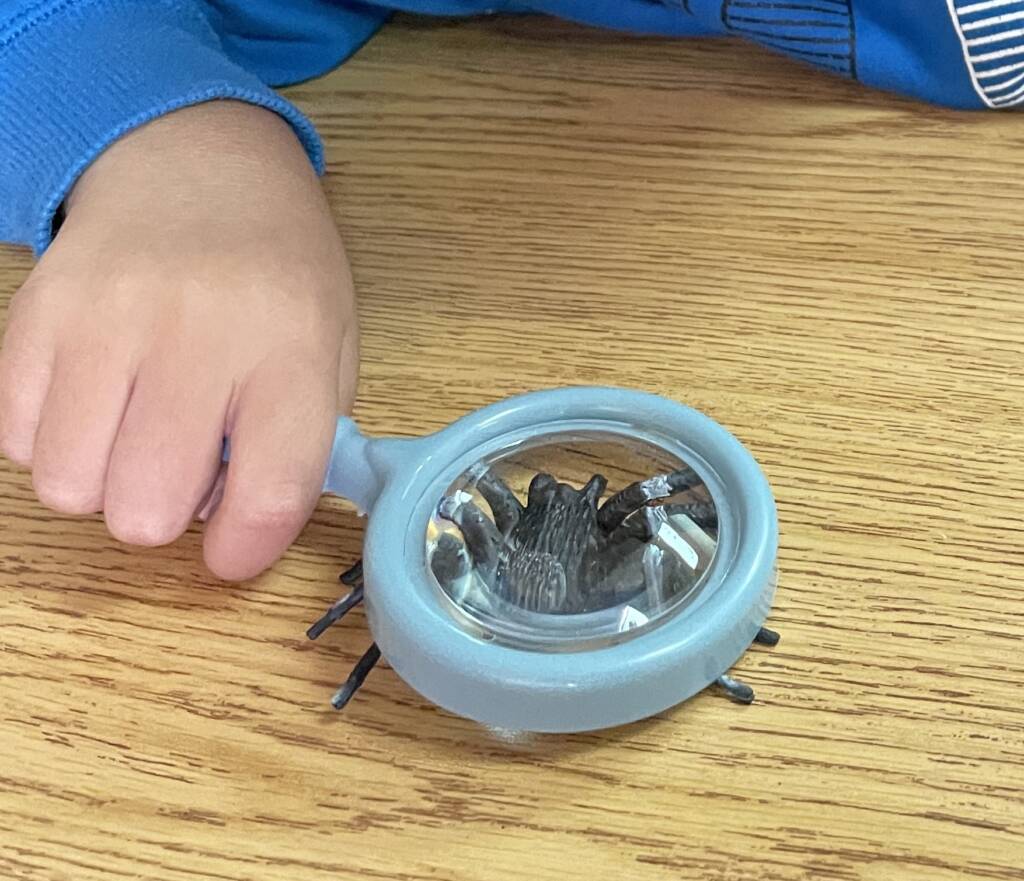
I also bought a Play Bug Catcher Kit. My students explored the bugs using the magnifier. If they didn’t want to touch the bugs, they could “capture” them using the net. We also worked on counting skills as we picked the bugs up to put in the critter box. We also utilized our light box to explore the bugs.
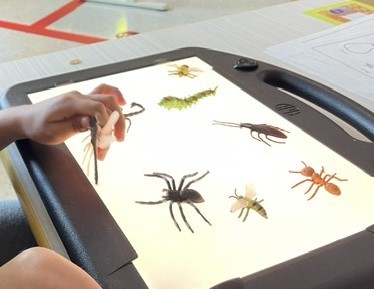
Manipulating the Sculpting Foam
Benefits include:
- Develop hand and eye coordination – squeezing, patting
- Develop finger and hand muscles – poking, pinching (be creative and learn about texture, shapes and forms)
- Manipulate through rolling, cutting, making shapes
- Experience making 3-dimensional objects
- Soliciting assistance appropriately
- Express feelings and ideas.
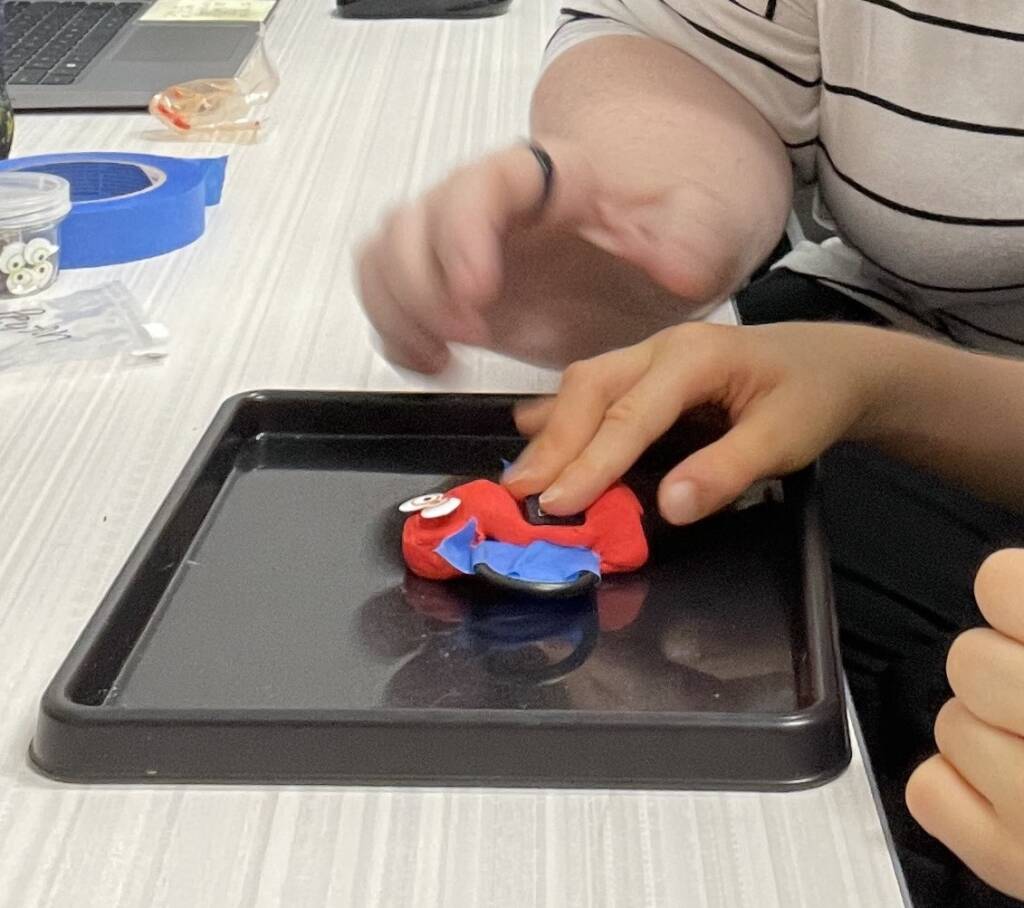
Assembling the bug
Benefits of assembling items to make a final product include:
- Creativity – thinking outside of the box
- Problem solving skills
- Fine motor skills
- Hand-eye coordination
One thing I learned is that until the clay dried, the wings could pop out. I used painters tape towards the top of the ‘wings’ to hold the ‘wing’ in place. After the top is dried, I flip the bug over to let the bottom dry. Parchment paper works great to avoid the ‘bug’ sticking to a surface. After the bugs were completely dried, I carefully removed the tape.
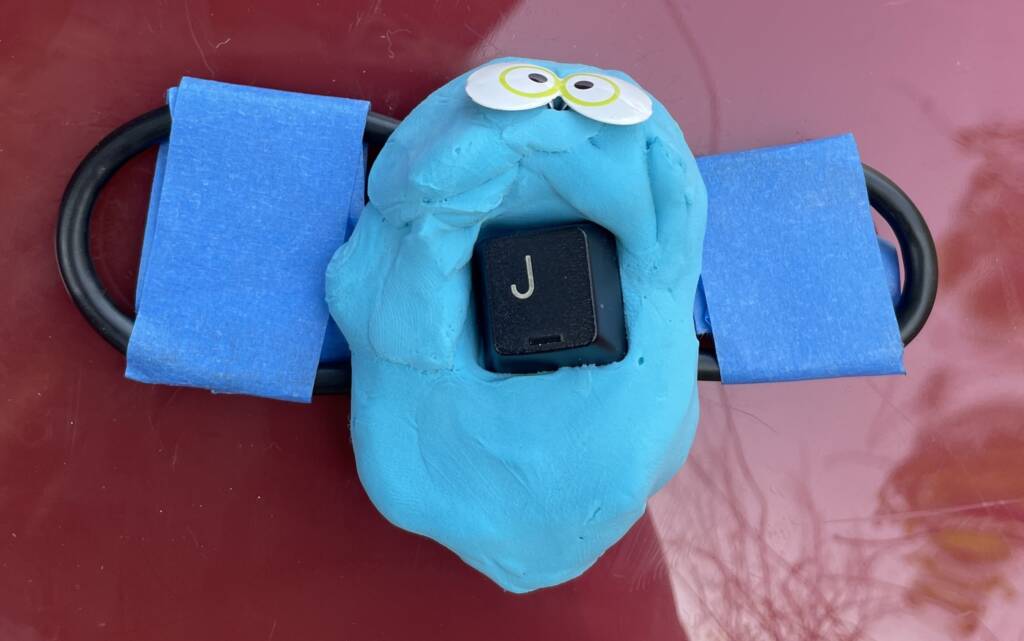
The bottom line here is to have fun! I enjoyed asking my students to pull all the skills we are working on to create a fun product to share! The final pieces turned out amazing! It was fun for them to see their bugs captured in a work basket where they could “capture” it and take it home to share with their families.
Adaptations and Extensions
- When appropriate, include this Computer Bug Poem generated by an AI Bot with your student’s bugs. You may also choose to provide this in your student’s preferred medium and discuss the concepts addressed in this poem.
- For students with low vision, include other methods for sorting the plastic bugs, those with spots, stripes, by color, or number of eyes.
- Create simple math story problems using the plastic bugs, and ask your students to solve them.
